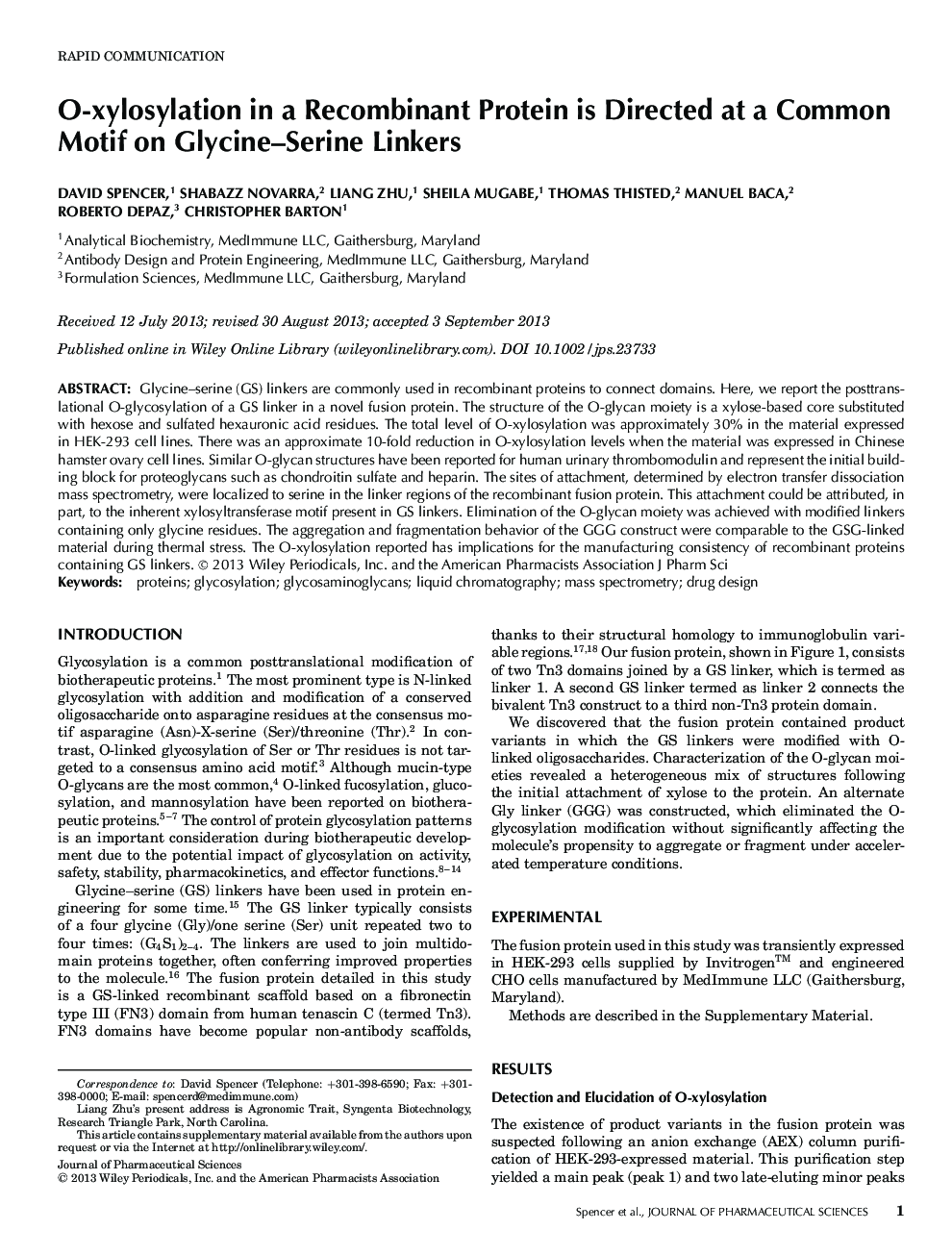| Article ID | Journal | Published Year | Pages | File Type |
|---|---|---|---|---|
| 2484776 | Journal of Pharmaceutical Sciences | 2013 | 5 Pages |
Abstract
Glycine-serine (GS) linkers are commonly used in recombinant proteins to connect domains. Here, we report the posttranslational O-glycosylation of a GS linker in a novel fusion protein. The structure of the O-glycan moiety is a xylose-based core substituted with hexose and sulfated hexauronic acid residues. The total level of O-xylosylation was approximately 30% in the material expressed in HEK-293 cell lines. There was an approximate 10-fold reduction in O-xylosylation levels when the material was expressed in Chinese hamster ovary cell lines. Similar O-glycan structures have been reported for human urinary thrombomodulin and represent the initial building block for proteoglycans such as chondroitin sulfate and heparin. The sites of attachment, determined by electron transfer dissociation mass spectrometry, were localized to serine in the linker regions of the recombinant fusion protein. This attachment could be attributed, in part, to the inherent xylosyltransferase motif present in GS linkers. Elimination of the O-glycan moiety was achieved with modified linkers containing only glycine residues. The aggregation and fragmentation behavior of the GGG construct were comparable to the GSG-linked material during thermal stress. The O-xylosylation reported has implications for the manufacturing consistency of recombinant proteins containing GS linkers. © 2013 Wiley Periodicals, Inc. and the American Pharmacists Association J Pharm Sci 102:3920-3924, 2013
Related Topics
Health Sciences
Pharmacology, Toxicology and Pharmaceutical Science
Drug Discovery
Authors
David Spencer, Shabazz Novarra, Liang Zhu, Sheila Mugabe, Thomas Thisted, Manuel Baca, Roberto Depaz, Christopher Barton,
